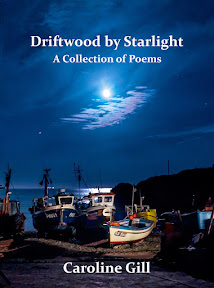I came across the Cornish Sonnet for the first time today, and am in the process of trying out the form. Can anyone tell me anything about 'early' Cornish sonnets?
The Cornish Sonnet is purported to be a hybrid of English and Arab writing that found its form in the eighteenth century. It would be good to be able to back this statement up with some evidence!
The rhyme scheme has two alternative patterns:
A, b, a, c, b, c - D, e, d, f, e, f - A, D
where capitals stand for lines that will be repeated in the closing couplet, and where other repeated letters stand for lines that share an end-rhyme e.g. 'e' and 'e' or 'A' and 'a'. The dashes represent the breaks in the flow of the text.
or
a, b, a, c, b, C - d, e, d, f, e, F - C, F.
- The Cornish Sonnet form on (or in) The Poet's Garret











No comments:
Post a Comment